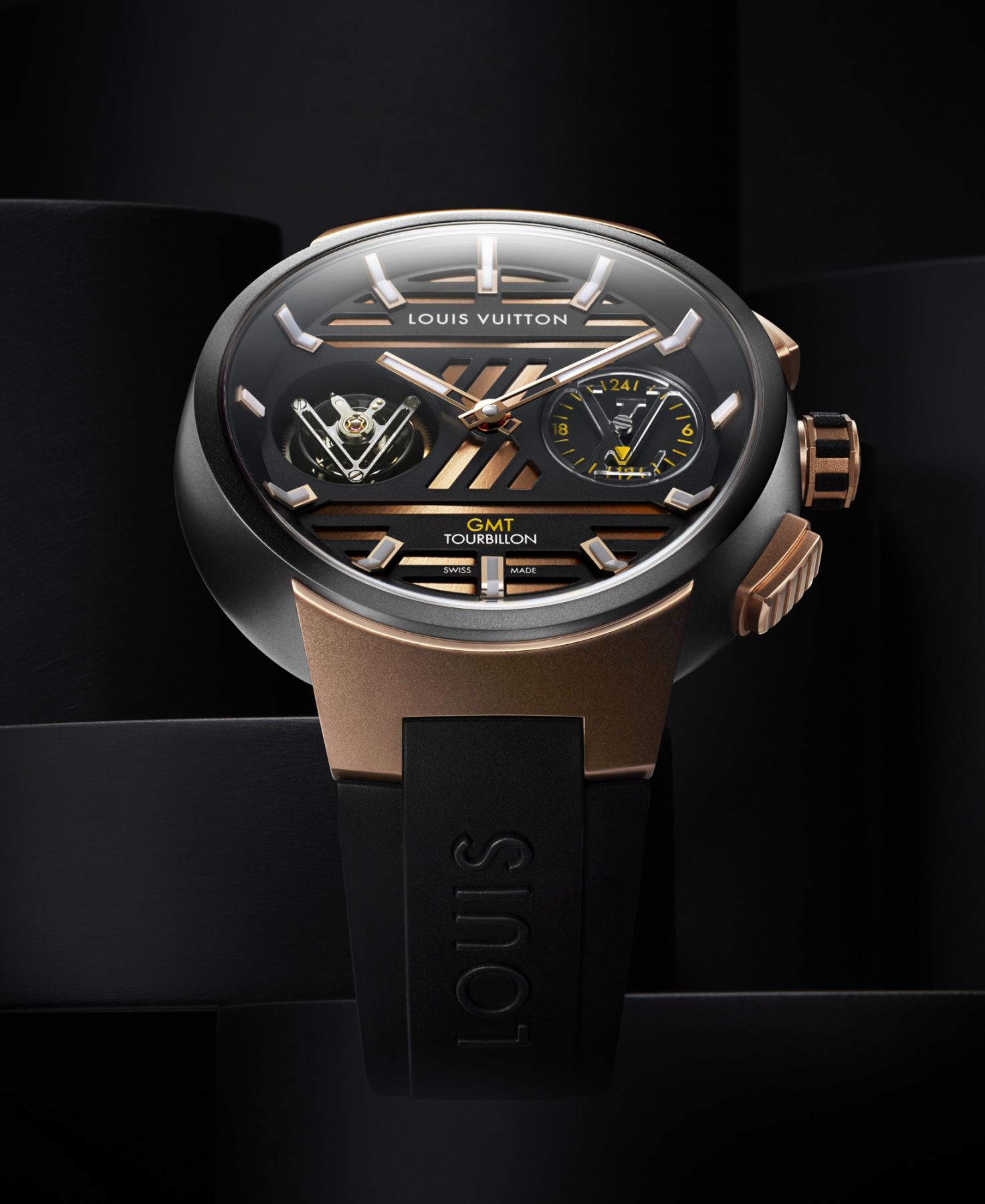Tatler+
Its latest timepiece is a demonstration of the brand’s unique approach to watchmaking
The spirit of travel has been integral to Louis Vuitton’s identity since its founding in 1854. The brand’s original raison d’être, after all, was the production of high-quality trunks for travellers. This spirit continues to inform every aspect of Louis Vuitton’s activities, and while it has since grown in both breadth and depth, the ideas of exploration and discovery remain important sources of inspiration for the maison.
Nowhere is this more clearly seen than in the brand’s latest headliner: the Tambour Curve GMT Flying Tourbillon. The timepiece doesn’t just allude to the spirit of travel with its second time zone complication, but also showcases Louis Vuitton’s ability to push the limits of contemporary watch design with its inimitable aesthetic.

TRAVEL AND BEYOND
Conceived, developed and produced at Louis Vuitton’s La Fabrique du Temps facility in Geneva, the Tambour Curve GMT Flying Tourbillon embodies the brand’s atypical approach to watchmaking. The GMT display at three o’clock, for instance, is corrected using pushers on the case’s right flank. Such a system is uncommon, and both a playful nod to the chronograph—which is absent here—as well as a practical feature that makes adjustments a cinch. The complication is, in turn, mirrored by the flying tourbillon at nine o’clock. The symmetry extends beyond their positions on the dial, though. Note the visual parallels of their respective motifs, and the “hourglass” between them.
Of course, the Tambour Curve GMT Flying Tourbillon’s sophisticated design language goes beyond just the two major elements that anchor its dial. For a start, the “hourglass” between them is actually part of a larger system of openwork across the entire dial. This pattern can be seen on the crown and pushers too, and the overall effect is an aesthetic reminiscent of architectural design. The indices further accentuate this: each is suspended from the flange, but extends to reach the dial, not unlike the construction joints commonly used to reinforce buildings.



